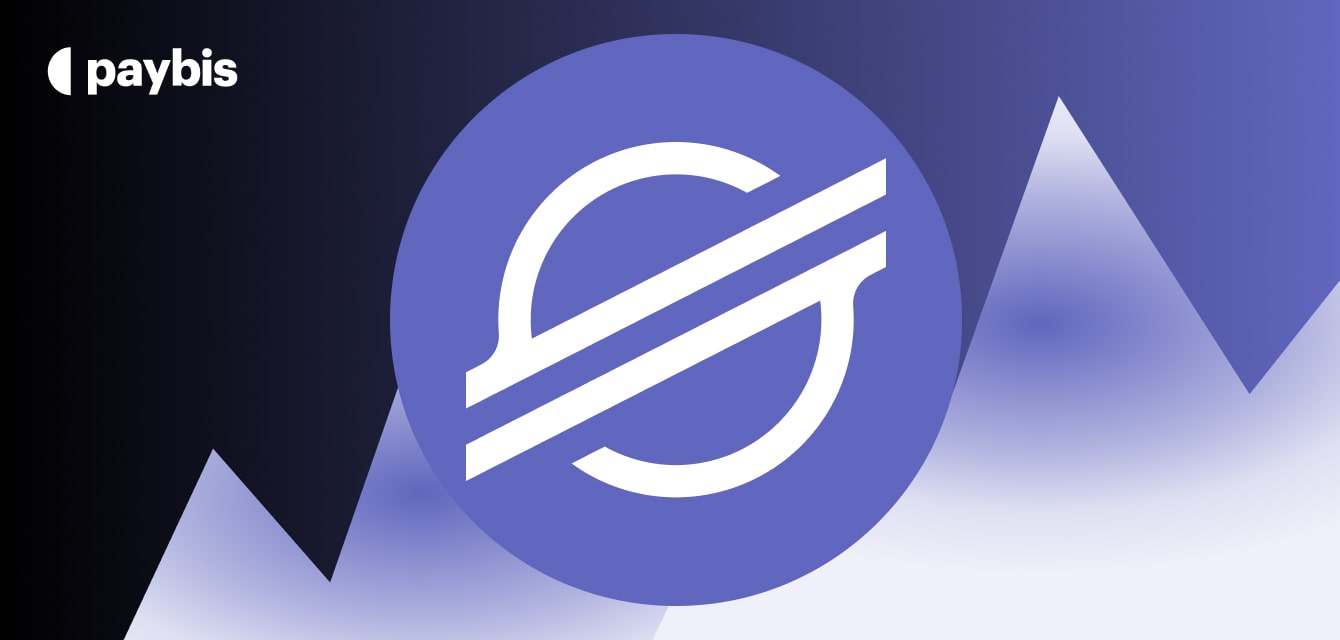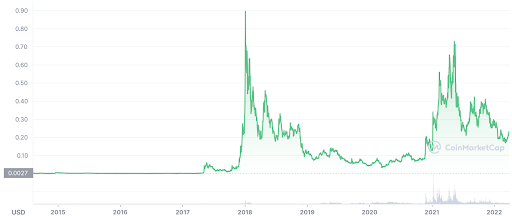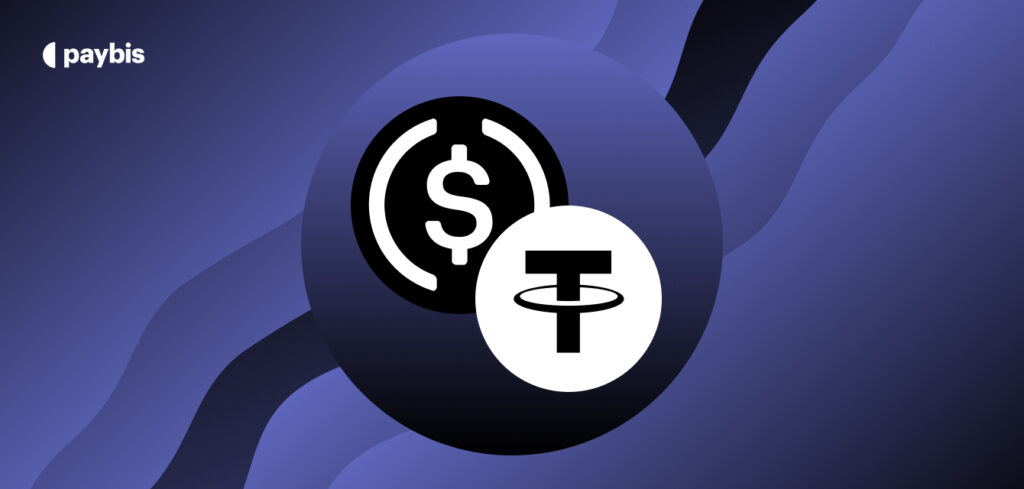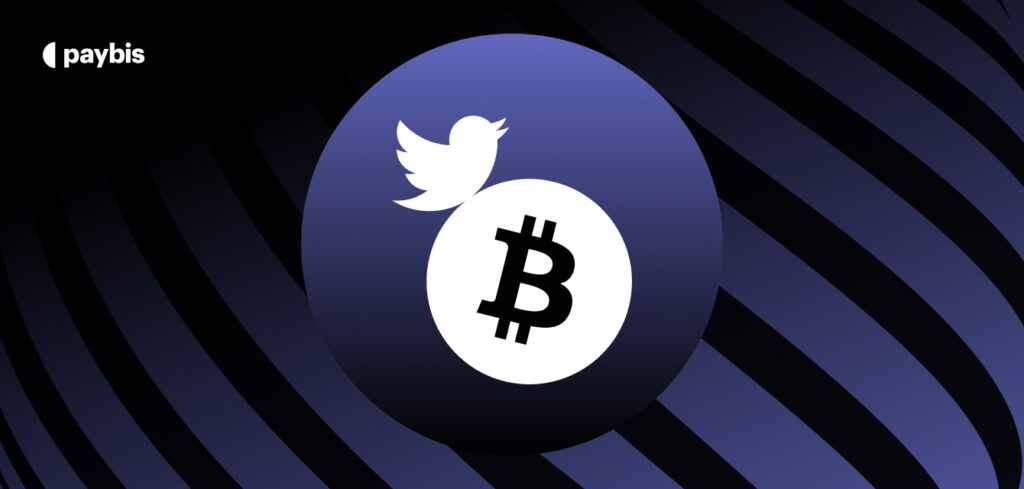Stellar price prediction: past, present, and future
Crypto world has its established big name tokens, such as, of course, the venerable Bitcoin and Ethereum. It also has a number of up-and-coming projects, such as Cardano and Polkadot. And then it has a number of background figures that have been around for ages without quite reaching the status of a household name.
Stellar (XLM) is a good example of the latter. It was first launched in 2014, which makes it older than Ethereum. It’s a well established platform that has delivered some, well, stellar returns over the years, but it’s also seen its downs. So what’s the Stellar price prediction for 2024, 2025 and beyond?
Table of contents
- What is Stellar
- Stellar price history: it’s been a long time
- Stellar price prediction 2024: XLM supply
- Stellar price prediction 2025: use cases and integration
- Stellar price prediction 2030: digital currencies
- Analysis from the best Stellar prediction tools
- Stellar price prediction 2040: a long-term view
- FAQ
What is Stellar
First things first: before we consider future Stellar value, let’s take a close look at the token itself.
No doubt you’ve heard how crypto is about to revolutionize the world of finance, rendering fiat currencies and traditional banking obsolete. That’s clearly an ambitious goal, and we’re a bit of crypto optimists ourselves. Still, even we have to admit this may take a while.
Stellar takes a different approach. Instead of trying to destroy traditional finance, it proposes a system that works along it and enhances it.
Here’s what this means. The Stellar network has been built for trading and transferring any kind of money, be it crypto or fiat. Its users can deposit different currencies, thus creating digital tokens. These tokens can then be transferred on the Stellar network just like crypto: moved across borders without opening any bank accounts, stored in wallets or, of course, redeemed for the underlying currency.
This works a bit like stablecoins; the difference is that anyone can issue these tokens, and they can represent any currency. For example, if you are outside Ukraine and want to hold some Ukrainian hryvnia (we’ll get to that later), you could call your bank, ask whether they open UAH accounts, sell UAH and accept hryvnia transfers. Or, you can just purchase hryvnia tokens on Stellar, knowing they’re backed up by and redeemable in UAH.
So, yes, Stellar functions much like an enhanced and upgraded version of the existing banking system. Just like banking, it can move multiple currencies across borders – but it’s faster, more efficient, scalable and decentralized.
Now, if you’re familiar with crypto, this may sound familiar – this is exactly what another cryptocurrency called Ripple purports to do. It’s not a coincidence: Stellar isn’t just inspired by Ripple, it actually was founded by the same person who also founded Ripple. It is, however, a crypto in its own right, and its focus is slightly different, too. If Ripple is more aimed at the corporate market, Stellar is built to be more accessible for the individual user. Moreover, while Ripple is controlled by a for-profit company, Stellar is decentralized and community-governed. There is a non-profit called Stellar Development Foundation dedicated to developing and promoting the platform, but it does not own the platform.
Stellar price history: it’s been a long time
Since the Stellar network can transfer any kind of currency, why do you need the Stellar token?
A quick note: technically, the Stellar token is called lumen. It is, however, often referred to simply as Stellar. We’ll use the terms interchangeably.
XLM does not get any special treatment on the Stellar network. It is, however, needed to initiate transactions and all network users are required to hold a small amount of XLM. This is supposed to discourage would-be attackers from abusing the system.
And “small” really does mean small. Most accounts only need to hold 1 lumen, and a single transaction costs a mere 0.00001 XLM. This means that Stellar can settle cross-border payments in seconds for a fraction of US cent. That’s remarkable even by crypto standards: in comparison, when the average transaction fee on the Ethereum network reached USD 15, it was hailed as a 6 month low.
Of course, since it is the native token of Stellar, XLM also serves as an investment in the platform – so let’s see how it has fared.
Stellar has not been able to replicate its 2018 success, but it has come close. Chart: CoinMarketCap
Remember that Stellar was launched back in 2014 when crypto was very much in its infancy. It’s little wonder, then, that it spent its first years in relative obscurity, trading around the USD 0.03 mark.
As the Stellar price chart suggests, it first appeared on the radar in May 2017 when it hit USD 0.06. Following some easing, it resumed its upward trend in late 2017 and soon took off to new heights. In January 2018, it reached its all-time high of USD 0.8962, although this proved to be a short peak, rather than a sustained increase.
XLM has not had another ATH since, although it has come close: in May 2021, it spiked to USD 0.72. It has seen its ups and downs since.
Stellar price prediction 2024: XLM supply
Unlike many other cryptos, Stellar cannot be mined. Instead, 100 billion XLM were created when the network launched. Initially, the total supply of Stellar was designed to increase by 1% every year, a mechanism that would work much like inflation.
In 2019, however, the Stellar community voted to remove this mechanism and cut the total supply of XLM in half. Of the remaining 50 billion XLM, 20 billion are on the open market. The rest is controlled by the Stellar Development Foundation. This means that the foundation retains a notable cache of XLM. It has already stated that these lumens will enter the market over the coming years, thus increasing the available supply of the token.
The process is entirely transparent: anyone can look up the current available supply of Stellar tokens on Stellar’s website.
This is another thing to keep in mind when considering any possible Stellar price movements. It is worth noting, however, that previous changes in the total supply of Stellar lumens have had a limited effect on its price. For example, the 2019 decision to cut the total supply hardly shows up on the price chart. What did have a much larger effect was the overall state of the crypto market: XLM hit its 2021 peak in a bullish market.
Stellar price prediction 2025: use cases and integration
There’s a reason why we started our Stellar price prediction with an overview of how the currency works: as it has a very clear use, it also provides a clear way to evaluate its success.
If Stellar is to succeed, its network must be used for its stated purpose of moving money with ease. So how’s it going?
Let’s start with the most obvious use. As noted, the digital tokens that can be created and traded on the Stellar network work much like stablecoins. This means that an actual stablecoin on the Stellar network makes perfect sense.
And indeed: the USDC stablecoin counts Stellar among the networks it’s available on. Note that USDC isn’t available exclusively on Stellar; rather, it’s a multi-platform token that counts Stellar among its blockchains. According to USDC’s own data, the total amount of Stellar USDC’s reaches USD 12 million and the payment volume exceeds USD 7.7 billion.
Of course, it helps to put this in perspective: at the same time the total supply of all USDC stands at USD 52 billion.
Another obvious use case is cross-border money transfers. And, indeed, Stellar is actively working in this direction. In October 2021, it announced partnership with Moneygram, the second largest money transfer provider in the world.
Again, when considering Stellar as an investment opportunity, it’s important not to overestimate this move. Moneygram has its own established payment infrastructure, and it’s not replacing it with Stellar’s (although that would be huge). Rather, this is more of a pilot project: Moneygram customers can send payments in Stellar USDC.
USDC payments on Stellar have multiple advantages for customers, such as near-instant settlements. Just as importantly, it also provides a strenuous real-world test for Stellar’s technology and proves the network can attract major partners.
Stellar price prediction 2030: digital currencies
So far, we’ve been discussing Stellar’s partnerships with private companies. It does not stop there, though.
As it’s built to create digital representations of different currencies, Stellar is also perfectly suited for projects such as Central Bank Digital Currencies (CBDC).
CBDC basically is a digital version of a country’s fiat currency. Unlike crypto, it is very much centralized; it is issued by the central bank, and its value is on par with the respective fiat currency.
Again, this works much like stablecoins, the major difference being that these tokens are backed by the country’s central bank.
This solves a major issue with stablecoins. Many of them claim to have fiat currency reserves for every token issued. There have been concerns, however, that this isn’t always the case.
Considering how much the crypto world depends on stablecoins, accountability and transparency issues could potentially turn disastrous. Now, this debate goes beyond the scope of this blog post, but there’s one thing that can be said about CBDC: the central bank would be able to withstand much closer scrutiny.
Keeping this in mind, it comes as little surprise Stellar has been actively working on a CBDC pilot project of its own.
Remember how we said we’ll get to Ukrainian hryvnia later? Here’s why: Stellar is working on a digital version of UAH. Again, it’s important to note that this is a pilot project, not a full-blown attempt to replace a nation’s currency. Moreover, it is not launched by the Ukrainian Central Bank itself; rather, Stellar is working with a commercial bank in Ukraine under the supervision of UCB. It does, however, come with full endorsement and support from the Ukrainian government.
The President of Ukraine Volodymyr Zelenskyy during a meeting with Stellar Development Foundation’s CEO Denelle Dixon. Photo: Stellar
Unfortunately, on February 24, 2022, Russia invaded Ukraine, which we’ve covered in a previous blog post. It’s important to understand, however, that the Ukrainian government has not collapsed under war-time conditions. Quite the opposite: it is successfully fighting the Russian aggression, and the rest of the world has pledged massive support for rebuilding the country.
Even the digital UAH project is very much active: on March 21, Stellar Development Foundation’s CEO Denelle Dixon confirmed that Stellar is actively working on the project.
At Paybis, we’ve always stressed that we do not provide any investment advice. This still stands, but here’s one thing we can say. Just like the rest of the world, we firmly believe in the Ukrainian victory. And, when it comes to rebuilding the country, Ukraine will be in a great position to implement innovative solutions. Stellar’s digital hryvnia pilot may or may not be among them, but it’s a good idea to keep an eye on it.
Analysis from the best Stellar prediction tools
So far, we’ve been discussing the fundamentals of Stellar as well as some ongoing projects that may move its prices in the future. Let’s now consider some forecasts of specific price points.
Of course, any such estimates are only for your consideration and research. This does not mean Stellar will be worth this exact amount at this exact moment. Rather, these long-term price predictions are just another piece of information to consider when making your own decisions.
Having said that, here’s a closer look at some popular crypto prediction websites.
- Wallet Investor suggests the token could be trading between USD 0.40 and USD 0.80 in 2025. This would mean a solid increase, although it would not reach another all-time high;
- Price Prediction is more bullish, suggesting the token will reach USD 0.75-0.92 in 2025. By this estimate, Stellar would finally reach another all-time high in 2026;
- Digital Coin has a more restrained forecast, as it often does: it puts the XLM price in 2025 between USD 0.40 and 0.50.
Note that these are AI-powered predictions that work by extrapolating Stellar price history. It does not take into account any of the projects Stellar is working on – or, of course, any black swan events that could have a major impact on the crypto market in general.
Stellar price prediction 2040: a long-term view
As we take a long-term view on Stellar’s future, let’s repeat the key points.
Here’s what Stellar has going for it:
- The technology was first launched in 2014, which means that, by now, it’s established, mature, and time-tested;
- The network can deliver remarkably fast and cheap transactions;
- It has a growing number of real-world applications, such as powering cross-border transfers;
- Stellar Development Foundation has established partnerships with key players, such as international money transfer services and central banks;
- If you’re considering Stellar as an investment, it’s also worth noting that there’s a hard cap on the total number of XLM, which may help maintain their price.
There are also some issues to consider:
- It faces competition from other cryptos. Most remarkably, its rival Ripple has a market cap that’s about 8 times larger;
- Its key partnerships remain limited pilot projects, not large-scale integrations;
- Although it’s far from being a has-been, its last all-time high was back in 2018 and it has not been able to replicate its success since;
- Some crypto purists may object to certain aspects of the token, such as working alongside the traditional finance system, rather than aiming to replace it.
Let’s try putting this together, keeping in mind that any investment decisions are your own. Here’s just our take on things.
Some vocal holdouts notwithstanding, the crypto world is moving towards coexistence among different cryptos, rather than one particular token emerging victorious. For one, there’s no shortage of the so-called Ethereum killers – and Ethereum itself is very much alive and kicking. This means that at least five major cryptos can fit in the same market niche and remain successful. By this measure, the Ripple/Stellar rivalry looks almost non-existent.
The multitude of projects Stellar is launching is also encouraging. Of course, not all of them may become successful. This shows, however, that Stellar Development Foundation is actively looking for – and finding – new ways to promote the token. At the very least, Stellar is taking its shots.
Finally, it is already so well established, it’s safe to say that it probably won’t collapse overnight. Even if Stellar lumen value declines, the network itself will still be used for money transfers.
We’re not trying to predict any future price points, but the sites that do suggest XLM is unlikely to explode in value anytime soon. They also repeat our estimate that it’s unlikely to collapse.
All this suggests that Stellar may be viewed as a relatively low-risk investment. Of course, this also would mean lower returns – but then again, there’s no shortage of high-risk, high-return cryptos.
What do you think? Does Stellar have a future – or did we miss something? Let us know in the comments and stay tuned for more deep dives!
Finally, if the project has caught your attention, check out our handy Stellar calculator to see how much XLM you could get. And, if you decide to buy Stellar, Paybis is a great place to do it!
FAQ
What’s the connection between Stellar and Ripple?
Stellar and Ripple both share the basic idea, that is, enable cheap and fast money transfers in any currency. They both were founded by the same person. Other than that, they are two independent cryptos that have their own projects and developments.
Will Stellar collapse?
Barring a major black swan event, there is no reason why Stellar should collapse. It’s not a speculative token with little backing: it is an existing platform with real-world users and ongoing development.
Can Stellar reach USD 1?
Given that USD 1 isn’t really that far from Stellar’s all-time high, it’s not inconceivable that it could indeed reach and exceed this psychological level. It’s probably a better idea, however, to consider the fundamentals of the token, rather than trying to predict when it will reach a specific price point.
How much will Stellar cost in 10 years?
We won’t try to answer this question with any specific price points. Instead, consider the projects Stellar is working on: money transfers for the unbanked, central bank digital currencies and stablecoins. If they succeed, Stellar also stands to benefit.
Is it a good idea to invest in Stellar?
It depends on what you want to achieve with your investment. If you’re looking for the next big thing that will explode in value, there are probably other, more likely candidates – although, of course, it’s always possible that Stellar surprises on the upside. If you’re looking for an established technology that delivers real value – Stellar is worth your attention.
Disclaimer: Don’t invest unless you’re prepared to lose all the money you invest. This is a high‑risk investment and you should not expect to be protected if something goes wrong. Take 2 mins to learn more at: https://go.payb.is/FCA-Info




